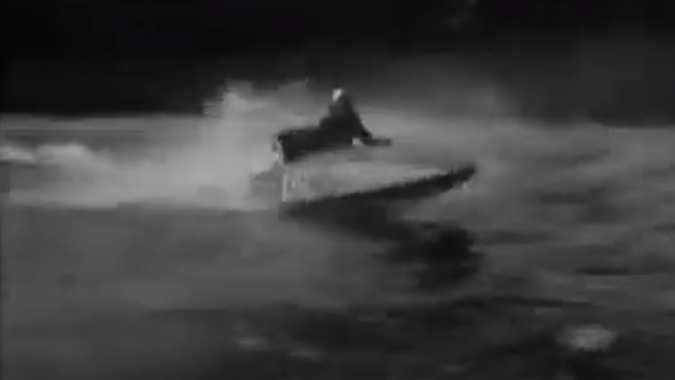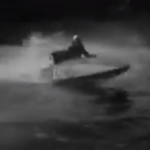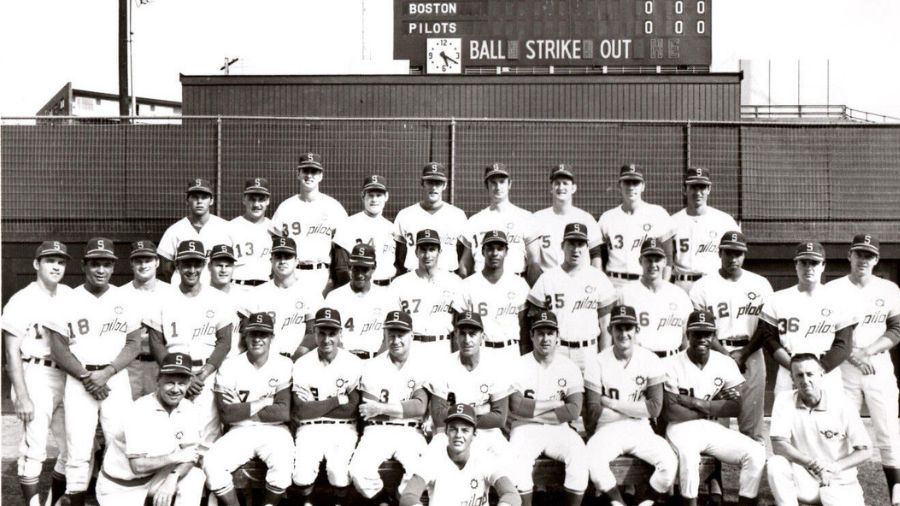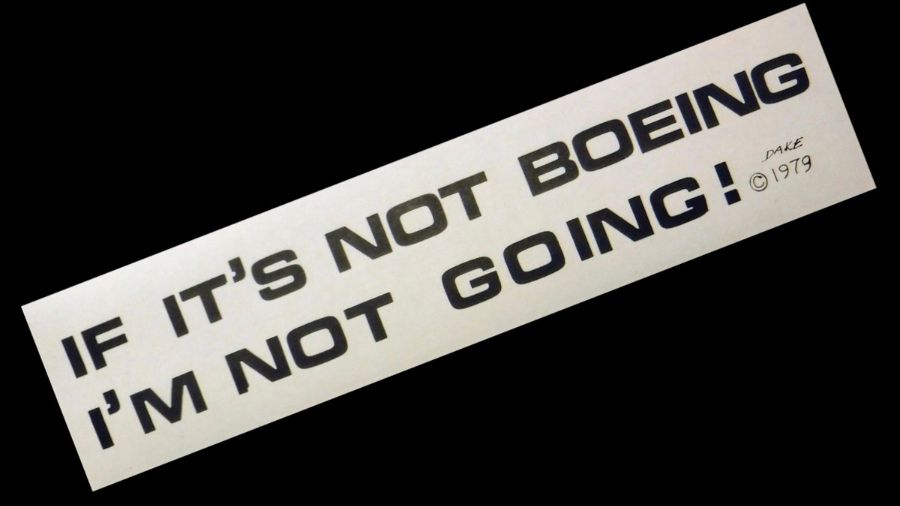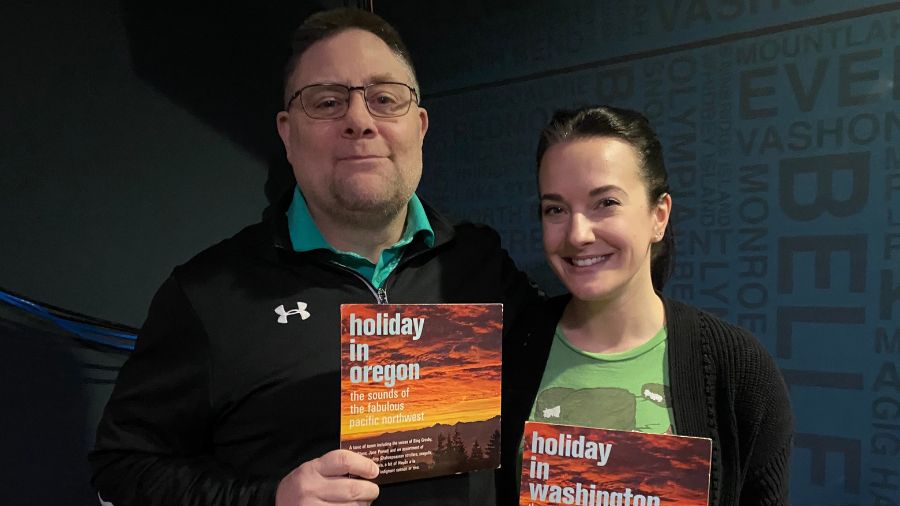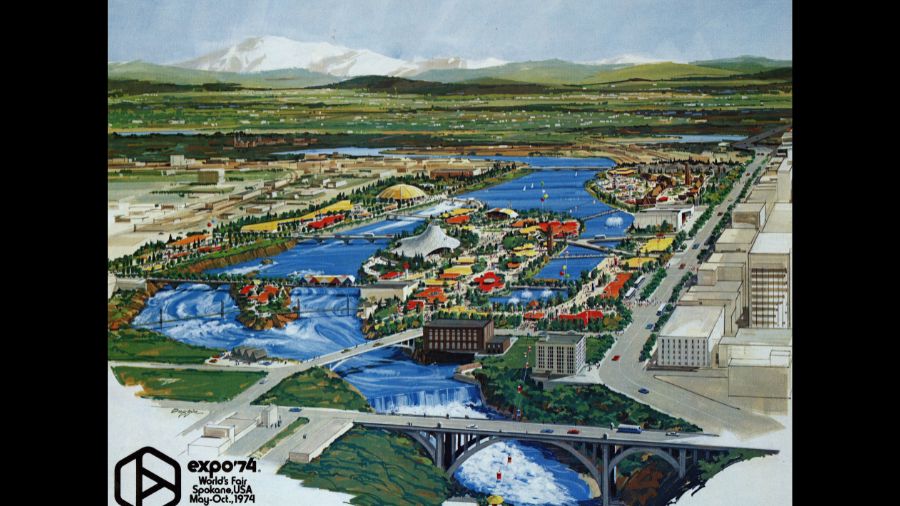Thrilling boat races once ran on the Sammamish Slough
Apr 14, 2023, 8:50 AM | Updated: 10:54 am
From the 1930s to the 1970s, the Sammamish Slough was the unlikely location of a day of boat races held every April on that narrow body of water connecting Lake Sammamish and Lake Washington.
The races on the slough – which is sometimes known as the Sammamish River and which was also known as the Squak Slough until roughly the 1920s – were a big deal around here for decades, and they were part of a circuit of similar competitions on less exciting waterways around the Northwest. They also fit into the family tree of the once-dominant Seafair hydro races.
To commemorate the spirit and bring back some of the sights and sounds, a special event is taking place Saturday, April 15, in Kenmore. It’s sponsored by the Seattle Outboard Association and goes all day from 10 a.m. to 5 p.m. at the boat launch parking lot at the mouth of the slough.
Saturday’s event – and the fond memories of locals of a certain age – all hearken back to the old-school outboard races, which ended back in April 1976 (after a spectator was injured and race organizers couldn’t get insurance anymore).
Even in a slow-moving canoe, the slough is narrow and twisty, with a lot of shallows and hazards. The old races with fast boats were a big spectator event, with people lining the banks and the bridges along the way and, more than likely, consuming a fair amount of Oly and Rainier.
And the boats got faster and faster over the years. Spending just a few minutes watching old silent home movies of the races on YouTube, most viewers are amazed that no one got killed.
Among the other visual gems on YouTube is one British newsreel from 1949, which also includes an audio track.
“Seattle and outboard racing takes a new twist on just about the most difficult course the competitors could pick,” the Etonian narrator proclaims. A farmer and cow, he continues, seem “undisturbed by [the] high-powered roar of engines as the men at the wheel begin to qualify for their wings.”
“Land ho, and it’s overland for him,” says the narrator, excitedly describing a common phenomenon of the slough races, when boats would frequently leave the water and end up on the land. “But now and again, fate takes a different kind of hand . . . and is his name mud!”
Bob Wartinger is a legend in outboard motorboat racing around the globe and holds the world outboard speed record of 170 mph. But decades ago, he pulled a miniature hyroplane behind his bicycle. And, before he even had his driver’s license, Wartinger started racing on the Sammamish Slough in 1963 in a non-miniature boat he built himself.
Bob told KIRO Newsradio that driving 50-plus miles an hour in a 9-foot plywood hydroplane through sharp turns and past bridge pylons – all the while looking out for logs and other obstacles in slough – was pretty intense. And pretty much everything could go wrong – in the water, or sometimes (as that British narrator described) in the mud – on the high-speed round-trip journey from Kenmore all the way to Lake Sammamish and back.
“It’s about 14 miles, and it’s the twistiest, turniest run that you can imagine,” Wartinger told KIRO Newsradio. “And in the 30s and 40s and 50s, people would, depending on the water level, they might end up in a farmer’s field or on the bank.”
Damaged gear and breakdowns were a fact of life on the slough, says Wartinger, so “you always took a spare propeller, shear pin, [and] tools.”
And those spectators often did more than just spectate.
“Folks along the bank would help you,” Wartinger said, assisting with righting upside-down boats or helping get repaired craft out of the mud and back into the water.
Those 14 twisty miles accounted for just one direction of the trip, with packs of similarly powered boats all starting at the same time out in the lake and then trying to beat each other into the narrow channel of the slough. The sounds of the old outboards and the smell of the two-stroke engine oil likely had to be experienced in person to be fully appreciated.
Back in 1963, before Bob Wartinger could legally drive, the toughest thing was getting the homemade hydro from his parents’ carport in Shoreline, where he built it down to where the races started in Kenmore.
But a friend with a car and driver’s license helped out with that. Then, a veteran of the slough races gave young Bob Wartinger some priceless advice.
“’Here’s the trick to this thing,’” the veteran racer told Wartinger. “’Take it carefully on the way up to Sammamish, and then see who’s left.’”
“’And then,’ the experienced driver continued, ‘race those guys on the way down because attrition was somewhere between 50 and 70% because people hit banks and debris on way up,'” Wartinger said.
The advice paid off.
“I ended up third that first year,” Wartinger said. “But that was what the advice was, ‘Don’t wipe yourself [out] on the way up.’” He raced every subsequent year on the Sammamish Slough until the final event in 1976. Wartinger ended up as one of the top three finishers in the history of the race and went on to a long career racing bigger and faster boats all over the world.
The Sammamish Slough has been modified multiple times over the years, with the channel being dredged and straightened as early as the 1890s when steamboats regularly traveled between Lake Washington and Lake Sammamish. A major change came in 1916 with the opening of the Ballard Locks and Lake Washington Ship Canal, which resulted in a drop of the lake level of an estimated nine feet. Another major project in the early and mid-1960s meant more straightening for flood control and the construction of a dam at Marymoor Park (which meant the slough races could no longer go as far as Lake Sammamish).
An earlier name – Squak Slough – was a variation on the Indigenous placename for Issaquah. The name “Squak Slough” can be found in newspaper clippings as early as the 1870s; the names “Sammamish Slough” and “Sammamish River” first appear in print as early as the 1890s. All three names were in wide usage until the early 1920s, when “Squak Slough” seem to fall from favor – though old-timers probably still called it that well into the 1940s.
The event in Kenmore is free for spectators, though parking at the boat launch requires a Discover Pass. All ages are welcome, and there will be boats with vintage outboard motors on display and in the water. Seattle Outboard Association will be running short races just a little way up the slough, but the boats will go one at a time – no more packs of boats vying to be first in the channel.
Also likely no longer part of the festivities in this 21st-century tribute to the noisy and smoky past are the packs of boisterous spectators hoisting the Oly and Rainier.
You can hear Feliks every Wednesday and Friday morning on Seattle’s Morning News with Dave Ross and Colleen O’Brien, read more from him here, and subscribe to The Resident Historian Podcast here. If you have a story idea, please email Feliks here.

